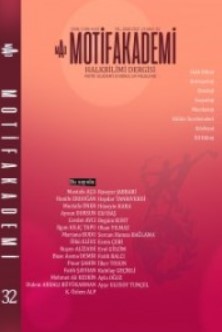TUVA TÜRKÇESİNDE HAYVANLARA YAŞLARINA GÖRE VERİLEN İSİMLER
NAMES RELATED TO THE AGES OF ANIMALS IN THE TUVAN TURKISH
Author(s): İlker TosunSubject(s): Cultural history, Turkic languages
Published by: Motif Halk Oyunları Eğitim ve Öğretim Vakfı
Keywords: Tuvan Turkish; animal name; word formation; language contact; onomastics;
Summary/Abstract: Studying animal names provides extremely important data for us to analyze culture in depth. Various animals (horse, mountaingoat, deer, etc.) have a considerable place in Turkish culture. In the vocabulary of the Turkish language, there are many names for wild animals and livestock animals. The Turkish peoples, who spread over a wide geography from the Balkans to Siberia, named animals according to various criteria. Inparticular, the colors, stains, and marks of animals such as horses, sheep, goats, deer, and cattle have been essential criteria in the classification of these animals. In addition to the secriteria, the age of animals is also a significant factor in naming them. The Republic of Tuva has geography suitable for both wild animals and animals such as horses, cattle, deer, sheep, goats, andcamels. Tuvinians gave various names to animals such as bear, marmot, wolf, roe deer, wild goat, horse, sheep, dog, cow, reindeer, goat, yak, deer, and camel. In this study, the names that Tuvinians give to animals according to their ages will be examined. These names will be compared with the Old Turkish period and information will be given about their etymologies.
Journal: Motif Akademi Halkbilimi Dergisi
- Issue Year: 13/2020
- Issue No: 32
- Page Range: 1570-1592
- Page Count: 23
- Language: Turkish

